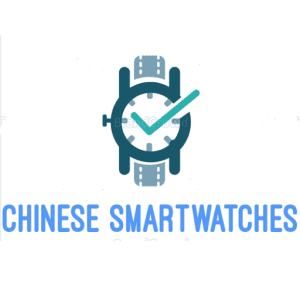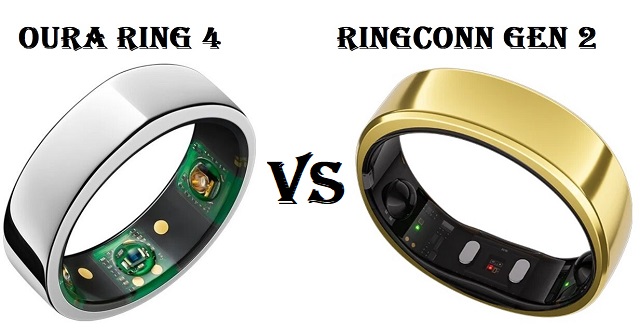In the realm of wearable health technology, smart rings have emerged as a discreet and stylish option for tracking various health metrics. The Oura Ring 4 and RingConn Gen 2 are two prominent contenders in this market, each offering unique features and benefits. This article provides a comprehensive comparison of these two smart rings, examining their pricing, design, health and wellness features, app experience, and battery life. By understanding the key differences between the Oura Ring 4 and RingConn Gen 2, you can make an informed decision about which one best suits your individual needs and preferences.
Oura Ring 4 vs. RingConn Gen 2: Specs Comparison
| Category | RingConn Gen 2 | Oura Ring Gen 4 |
|---|---|---|
| Build Material | Aerospace-grade titanium alloy, PVD coating, non-allergenic, seamless inner molding | Full titanium exterior and interior, non-allergenic titanium inner shell |
| Dimensions | Width: 6.8mm, Thickness: 2mm | Width: 7.9mm, Thickness: 2.88mm |
| Weight | 2 to 3 grams (varies by ring size) | 3.3 to 5.2 grams (varies by ring size) |
| Water Resistance | Up to 100m | Up to 100m |
| Sensor Array | Red and infrared LEDs, green and infrared PPG sensors, temperature sensor, accelerometer | Red and infrared LEDs, green and infrared PPG sensors, temperature sensor, accelerometer |
| Connectivity & EMF Safety | BLE, EMF-safe, Airplane Mode available | BLE, EMF-safe, Airplane Mode available |
| Battery Life | Up to 12 days; full charge in 90 minutes | Up to 8 days; full charge in 20 to 80 minutes |
| Charging Method | Portable charging case | Charging dock with USB-C |
| Onboard Memory | Stores up to 7 days of data | 16 MB |
| Cost & Subscription | $299 (early bird starts at $209, no subscription required) | $300 + $5.99 per month subscription |
Pricing and Value
The Oura Ring 4 and RingConn Gen 2 offer distinct value propositions based on their pricing models. The Oura Ring 4, positioned as a premium health and wellness device, comes with a higher price tag, typically ranging from $350 to $500. However, this price also includes a monthly subscription fee of $5.99, granting users access to all features and data insights within the app.
Conversely, the RingConn Gen 2 is a more budget-friendly option. It was initially priced at $299 during its Kickstarter campaign. A significant advantage is its subscription-free model, providing users with all features without additional monthly costs. This makes it a more affordable choice for those seeking a comprehensive health tracker without ongoing expenses.
Design and Materials
Both the Oura Ring 4 and RingConn Gen 2 prioritize a sleek, minimalist design, emphasizing aesthetics and comfort. Oura opts for a more classic, traditional wedding band-inspired look, crafted from titanium for a premium feel. It is available in various finishes, allowing for personalization.
The RingConn Gen 2, on the other hand, embraces a more modern design aesthetic. Constructed with aerospace-grade titanium alloy and coated with PVD, it offers a glossy and scratch-resistant finish, ensuring durability for daily use. The subtle differences in their design language cater to diverse preferences, whether you prefer a timeless or contemporary style.
In terms of dimensions, the RingConn Gen 2 is noticeably slimmer and lighter than the Oura Ring 4. It measures 6.8mm in width and 2mm in thickness, with a weight ranging between 2 and 3 grams depending on size. This makes it one of the lightest smart rings available. In comparison, the Oura Ring 4 is slightly larger at 7.9mm wide and 2.88mm thick, weighing between 3.3 and 5.2 grams.
Both rings are water-resistant up to 100 meters, allowing for worry-free wear during swimming or showering. Neither features a vibration motor or physical buttons, maintaining a streamlined and durable design.
These subtle differences in design and dimensions may not seem significant, but they can contribute to overall comfort. If you prefer a ring that feels almost weightless, the RingConn Gen 2 is the clear winner.
Health and Wellness Features
Sensor Technology
The Oura Ring 4 and RingConn Gen 2 share many similar sensors, including infrared, red, and green PPG sensors for monitoring heart rate, blood oxygen levels, and temperature. Additionally, both rings incorporate accelerometers to track movement, contributing to sleep and activity insights.
However, the RingConn Gen 2 has made notable advancements in its sensor technology. It features an upgraded PPG sensor that promises more accurate heart rate readings and a 3D accelerometer for improved motion tracking, including sleep apnea detection.
The Oura Ring 4 has also undergone sensor improvements, boasting a 120% increase in SpO2 signal quality and 30% more accurate blood oxygen measurements overnight. It also offers a general boost in accuracy for other metrics.
Sleep Tracking and Analysis
Both the Oura Ring 4 and RingConn Gen 2 excel in sleep tracking. Oura is renowned for its ability to break down sleep into stages and provide actionable insights into sleep quality, duration, and disturbances. Its approach is focused on delivering easy-to-understand information and suggestions for improving sleep.
The RingConn Gen 2 matches Oura’s sleep-tracking capabilities but offers more raw data for users seeking a deeper dive. A standout feature is its sleep apnea detection, which Oura does not provide in the same detail, making the RingConn an attractive choice for individuals requiring advanced sleep health monitoring.
Heart Rate and Stress Monitoring
Both rings monitor heart rate variability (HRV), a crucial metric for understanding stress levels and overall health. They also track blood oxygen levels, breathing assessments, and skin temperature trends.
While the core features are similar, the RingConn tends to offer more detailed raw data, while Oura focuses on making the information actionable with suggestions for health improvement.
Activity Tracking and Limitations
Although both rings can track basic activity metrics like step count and calories burned, neither is ideally suited for high-intensity workouts.
The heart rate tracking during intense exercise may not be as reliable as dedicated sports watches or fitness bands. Therefore, users seeking advanced exercise features may need to look elsewhere.
However, for daily activity monitoring, both rings perform adequately.
App Experience
The companion apps for both rings provide a user-friendly experience, but each has a distinct focus. The RingConn’s app allows users to explore more detailed raw data, appealing to those who enjoy personal analysis.
The Oura app, on the other hand, is designed to interpret data and provide personalized insights. It also includes features like Oura Labs and Oura Advisor, offering experimental tools and tailored health recommendations, making it a great choice for users who prefer guided health advice.
Battery Life
When it comes to battery performance, the RingConn Gen 2 takes the lead. It offers an impressive battery life of up to 12 days on a single charge, significantly surpassing the Oura Ring 4’s 8-day maximum.
The Oura Ring’s charging dock, with a USB-C connector, requires 20 to 80 minutes for a full charge, while the RingConn’s portable charging case takes approximately 90 minutes.
The portable charging case for the RingConn Gen 2 is particularly advantageous for frequent travelers, extending the overall usage time up to 150 days before requiring a recharge.
This feature makes the RingConn Gen 2 especially suitable for those who value convenience and infrequent charging.
Final Verdict
Both the Oura Ring 4 and RingConn Gen 2 are excellent options for tracking health, but there are key differences to consider.
The RingConn is lighter, has a longer battery life, and is more budget-friendly. It offers up to two weeks of battery life, and its portable charging case is convenient for travel. Additionally, there are no subscription fees, providing all features upfront.
Oura, on the other hand, focuses on providing actionable insights. It is a premium option with a classic design but is more expensive and comes with a $5.99 monthly subscription fee to unlock all features.




